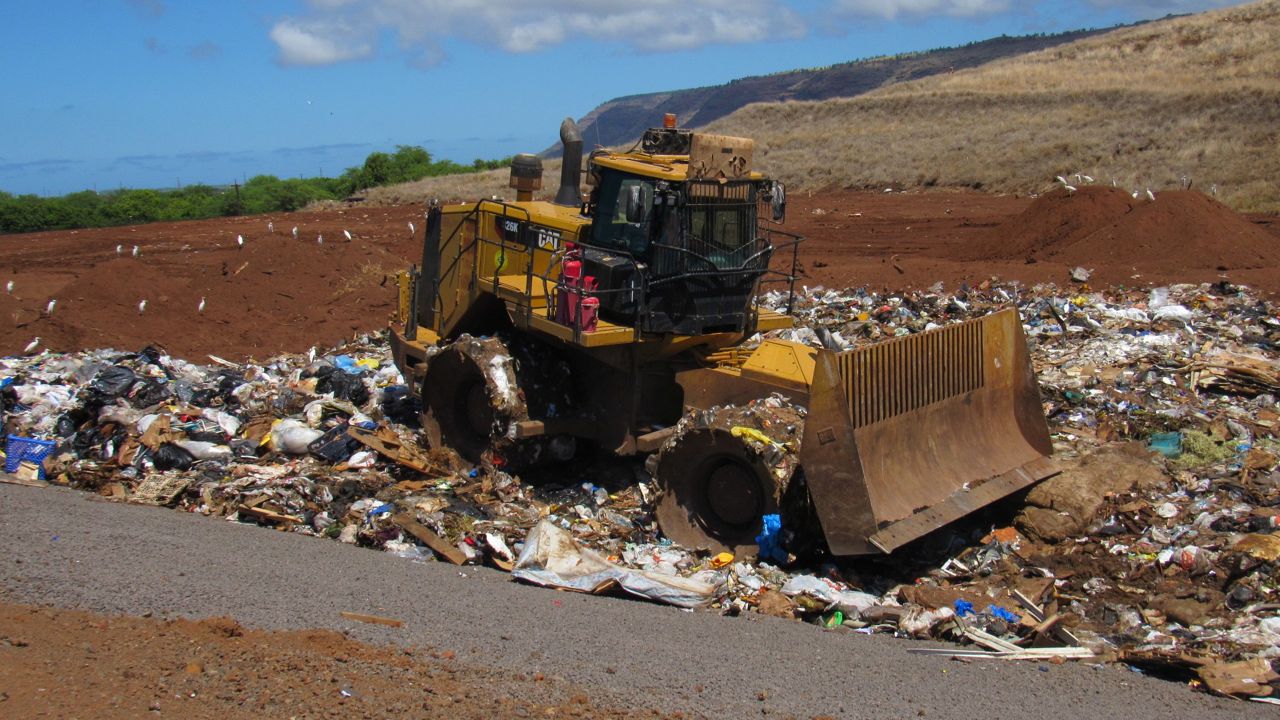This is the second part in a four-part series on trash and recycling, with articles about Oahu, Maui, Kauai and Hawaii Island.
Kauai residents and businesses create about 155,000 tons of waste every year. About 90,000 tons of that trash goes to the Kekaha Landfill annually.
However, about 65,000 tons of trash are diverted from the landfill by being recycled, reused or composted.
Living on an island where the limited amount of space is always a concern, there are big questions about the future of our landfills. By reducing, reusing and recycling, we keep waste out of the landfill.
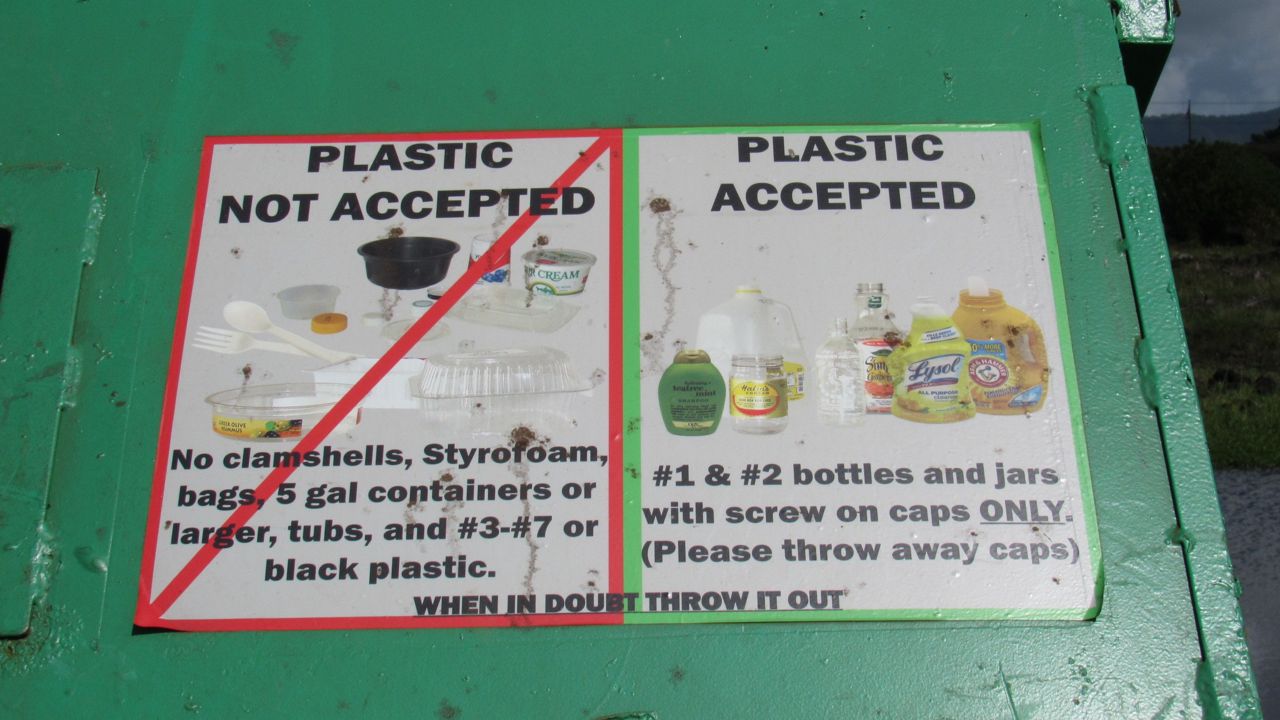
How recycling works
The Kauai Recycles Program requires residents to drop off recyclables. Recyclables are collected at the Hanalei Transfer Station, at the end of Kahau Road past the Armory in Kapaa, at the parking lot behind K-Mart in Lihue, at Brenneke’s parking lot in Poipu, at the Lawai Post Office, at the Hanapepe Transfer Station, at Waimea Canyon Park and at the Kekaha Landfill.
Residents must pre-sort all recyclables. At each site, Kauai County accepts glass containers (no mirrors or jalousies), cardboard, mixed paper including newspaper and paperboard (cereal boxes and soda boxes), aluminum and tin cans, and bottles and jars made from plastics #1 and #2.
In 2018, Kauai stopped accepting plastic #1 and #2 clamshell, tray and tub-shaped containers.
The changes came after China limited the recyclables it would take and restricted the amount of contamination allowed in the bales of plastic and mixed paper sent to the country.
Hawaii does not have a facility to process recyclables into new materials, so Kauai ships most of its recyclables out of the state. Kauai sells its recyclables to markets in Asia, except for China. The Asian countries that Kauai sends its recyclables change depending on market demand. Glass with the HI5 label is sold in California, and non-HI5 glass stays on Kauai to be used in art, construction, landscaping and for other purposes.
Kauai’s recycling program costs $71,374 per month to run. This includes hauling bins from the eight drop-off sites, bin rental and maintenance, site maintenance, sorting contaminants, and processing and marketing the material.
Kauai’s contamination rate is below 3%, according to an annual report by Garden Isle Disposal, the company contracted to handle the County’s recyclables. Only cleaned and properly sorted recyclables are marketable, but 3% is far below Oahu’s contamination rate, which is between 12-25%.
In order for the County to provide curbside recycling, Kauai would need a Materials Recovery Facility, which would separate recyclables that have been mixed together in a “blue bin,” like on Oahu.
“Based on a 2015 feasibility study, construction of a Materials Recovery Facility at the Kauai Resource Center in Lihue would cost $12.2 million,” Allison Fraley, the Public Works Solid Waste program development coordinator, said to Spectrum News Hawaii in an email.
Ruta Jordans, the president of Zero Waste Kauai, told Spectrum News Hawaii that to increase recycling the island needs a Materials Recovery Facility. Zero Waste Kauai is hoping to help the County apply for Environmental Protection Agency grants that could help fund a Materials Recovery Facility and curbside recycling.
JoAnn Yukimura, the vice president of Zero Waste Kauai, told Spectrum News Hawaii that the County needs to do curbside pick up for recyclables in order to increase the amount of trash diverted from the landfill from 43% to 48%.
Currently, in order to drop off recyclables, Yukimua said, she has to load up a truck and drive to two places — one location for glass, cardboard, paper and plastic recyclables and another for HI5 recyclables. The driving time takes her at least two hours.
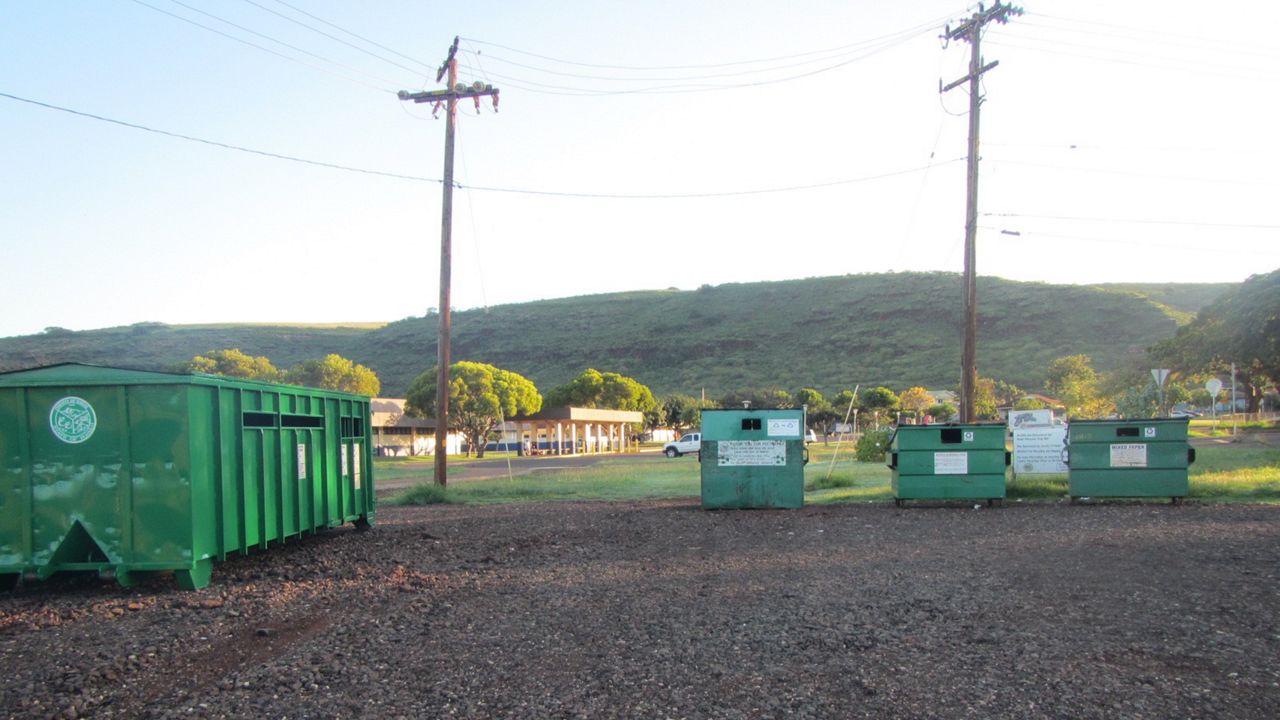
HI5 recyclables
The HI5 program allows for cans and bottles with the HI5 label to be exchanged for 5 cents. Beverage containers must be 2 liters or smaller and made of glass, plastic or aluminum.
Bottle caps are not accepted by the HI5 program and must be removed. Kauai residents who wish to recycle their bottle caps can do so through Precious Plastic Kauai.
The Hawaii Department of Health runs the HI5 program, which exists on all the islands. The 5-cent fee provides an incentive to bring the bottle container to a redemption center.
Kauai Community Recycling Service operates mobile HI5 redemption centers in Koloa and Kekaha two days per week at each location. KCRS also operates HI5 redemption centers in Kapaa and Kilauea. Reynolds Recycling operates a redemption center for HI5 containers at the Kauai Resource Center in Lihue. They also offer scrap value for non-ferrous metals. Go to Kauai County’s website for the days and hours of operation.
More detailed information about how the HI5 program works can be found in the first article in this series on waste and recycling.

Green Waste
Residents can bring green waste to the County’s refuse transfer stations. The green waste is taken to State-certified composting facilities that are contracted by the County.
While it is free for residents to drop off green waste, commercial companies must pay to drop it off. The fees vary depending on the composting facility. Small businesses with trucks of a maximum size of three-quarter ton capacity and trailers with maximum dimensions of 5-feet by 10-feet by 2-feet or equivalent can drop their green waste at the refuse transfer stations for $20 per load.
The composting facilities shred the green waste and then compost it in windrows.
Kauai also offers free composting bins for residents to use at home. Residents can make appointments to pick up a bin from the Kauai Resource Center in Lihue.
Over the past 20 years, the County has distributed 7,000 bins to residents. The bins cost the County about $55 each, including shipping.
“The Home Composting program is the County’s most economical waste diversion program,” said Fraley. “It requires no hauling or processing by the County or County Contractors. Material is managed in residents’ backyards and turned into a beneficial soil amendment.”
She said households compost an average of 21 gallons of food and yard waste per month. The life of a composting bin is 10 years, so approximately 9.66 tons of food and yard waste will be diverted over a bin’s life.
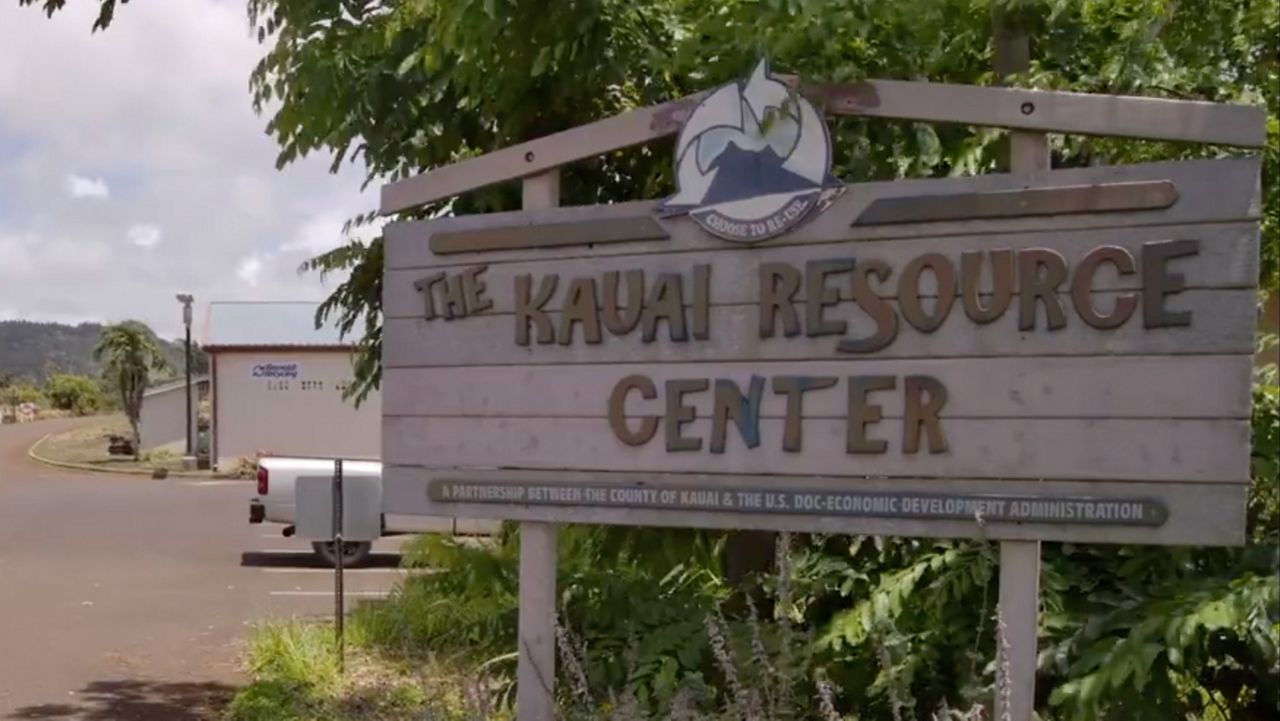
Before recycling, reduce and reuse
Across the state of Hawaii, every county has banned plastic bags. In Jan. 2011, Kauai’s plastic bag ban went into effect, which requires stores only provide recyclable paper bags or reusable bags to customers. The County’s goal was to reduce plastic litter and the burden on the landfill.
Kauai’s polystyrene ban went into effect at the beginning of 2022. This ordinance prohibits food providers from using or selling polystyrene foam food service containers. There are several exemptions, including using polystyrene foam food ware for raw meat, seafood, uncooked eggs and other foods. The fine for food vendors who do not comply with the ban is $250 per violation and up to $1,000 for repeat offenders.
A policy prohibiting the purchase, use and sale of disposable plastics applies to County facilities and events.
“All of these programs are key to sustainability, as they reduce the amount of disposable polystyrene and plastics that litter our streets and enter our streams and the ocean,” said Fraley.
Fraley encouraged residents to reuse polystyrene, packing peanuts and foam blocks that often come in shipments as packing materials. She said these materials could be reused when sending items in the mail or even as part of an art or construction project.
“Take the next step and think outside the box,” said Fraley. “We don’t want this material getting out into the environment, but there are ways to give it one more life in another medium.”
The County also hosts a “drop and swap” at the Kauai Resource Center where polystyrene, packing peanuts and bubble wrap can be dropped off.
The Kauai Resource Center helps divert waste from going to the landfill. This is where residents can pick up the aforementioned compost bins and drop off reusable items.
In 2011, Kauai County adopted a Zero Waste Resolution calling upon County agencies, residents, businesses and visitors to adopt Zero Waste practices hoping to meet a goal of 70% diversion of waste by 2023. However, Kauai’s waste diversion is only at 43%.
“In order to hit that goal we would need to implement aggressive measures that require funding commitments and further discussions with lawmakers and our community,” said Fraley.
Ideas such as commercial recycling laws that focus on construction and demolition debris, curbside recycling and composting initiatives are all currently being discussed.
Yukimura supported all the above ideas and emphasized that building a Materials Recovery Facility and implementing curbside recycling would help reach that goal.
“There has to be reuse of the materials so we don't keep destroying our forests and digging up all our minerals for an ever voracious population. And we also don't have the trash to deal with because we're reusing or recycling or reducing the waste,” Yukimura said.
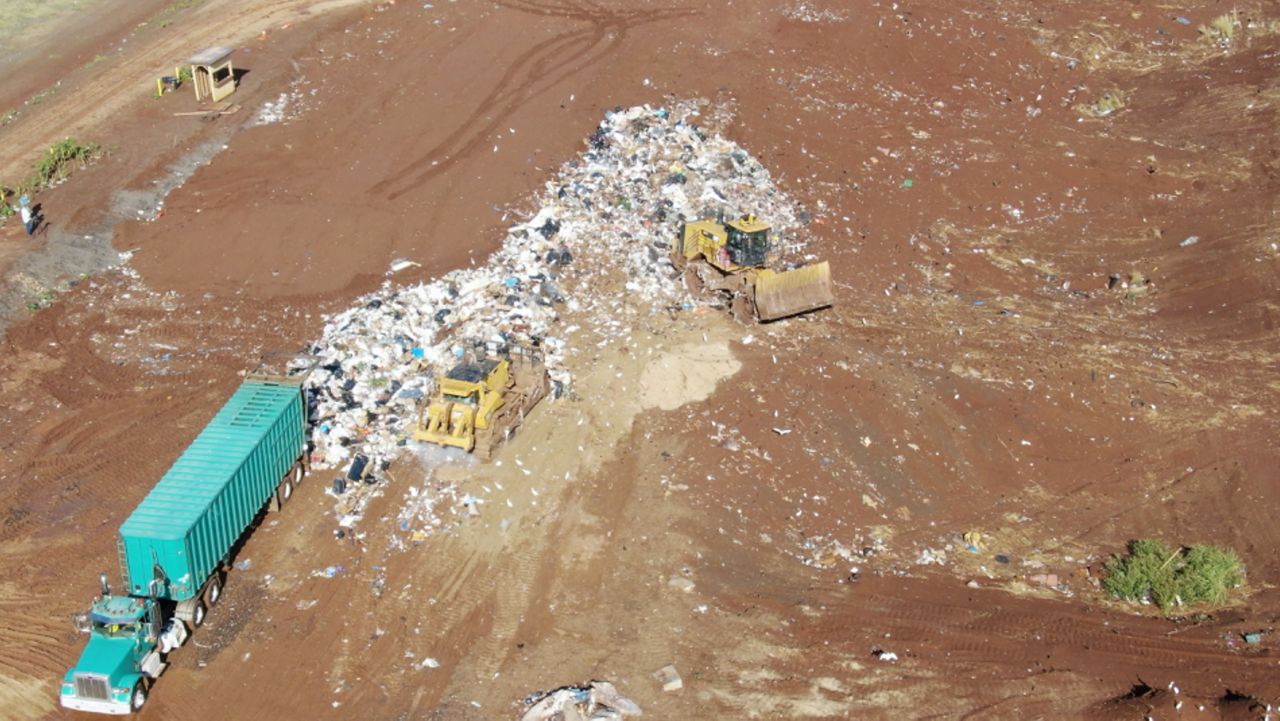
The future of the landfill
Currently, a vertical expansion of the Kekaha landfill is underway. The County estimates the landfill will be full at the end of 2029.
On Oahu, trash is incinerated at H-POWER and turned into electricity. (Read more about H-Power in the first article in this series.)
“The County has conducted studies over the years to assess the feasibility of waste to energy and other alternative technologies to landfill,” said Fraley. “So far, we have not identified a feasible option, however, the County has a consultant performing a study at this time.”
On Kauai, the Pay As You Throw program requires residents to pay $10 per month for a 64-gallon trash can and $18 per month for a 96-gallon trash can, which are picked up weekly.
“Pay as You Throw programs provide economic incentive to reduce waste because the more waste you generate, the more you pay for refuse collection service,” said Fraley. “Studies have shown PAYT programs increase recycling, green waste diversion, and source reduction, minimizing waste in the first place.”
During the last fiscal year, Kauai County collected $3.71 million in revenue from the Pay As You Throw program.
Yukimura said that the County should continue to charge for trash pickup, but offer free recycling.
“You'd have a system where incentives and disincentives are in the right place,” said Yukimura. “The HI5 program is based on the same principle. People who throw out HI5 containers, they’re throwing away money, and the people who go around collecting it, make quite a bit of money.”
Fraley said the County is looking for a new location for the landfill, but has no set date for when it will be determined. Once the County identifies a site, it will seek public input through an Environmental Impact Statement process.
“Kekaha is filling up and siting and constructing a new landfill has been known to take a minimum of eight years. Knowing that we are behind the eight ball on this timeline, we have an added sense of urgency to make sure siting and constructing a new landfill is successful,” said Fraley.
Yukimura expressed concern that the landfill is filling up too quickly.
“Our landfill is filling up quickly, far quicker than we think we have time to determine a site and build a new landfill,” said Yukimura. “We’re in crisis mode. But that’s partly because we haven’t been building a sustainable system to deal with our waste stream.”
Michelle Broder Van Dyke covers the Hawaiian Islands for Spectrum News Hawaii.




